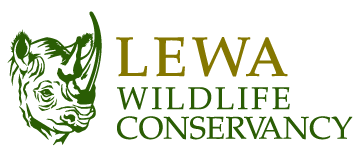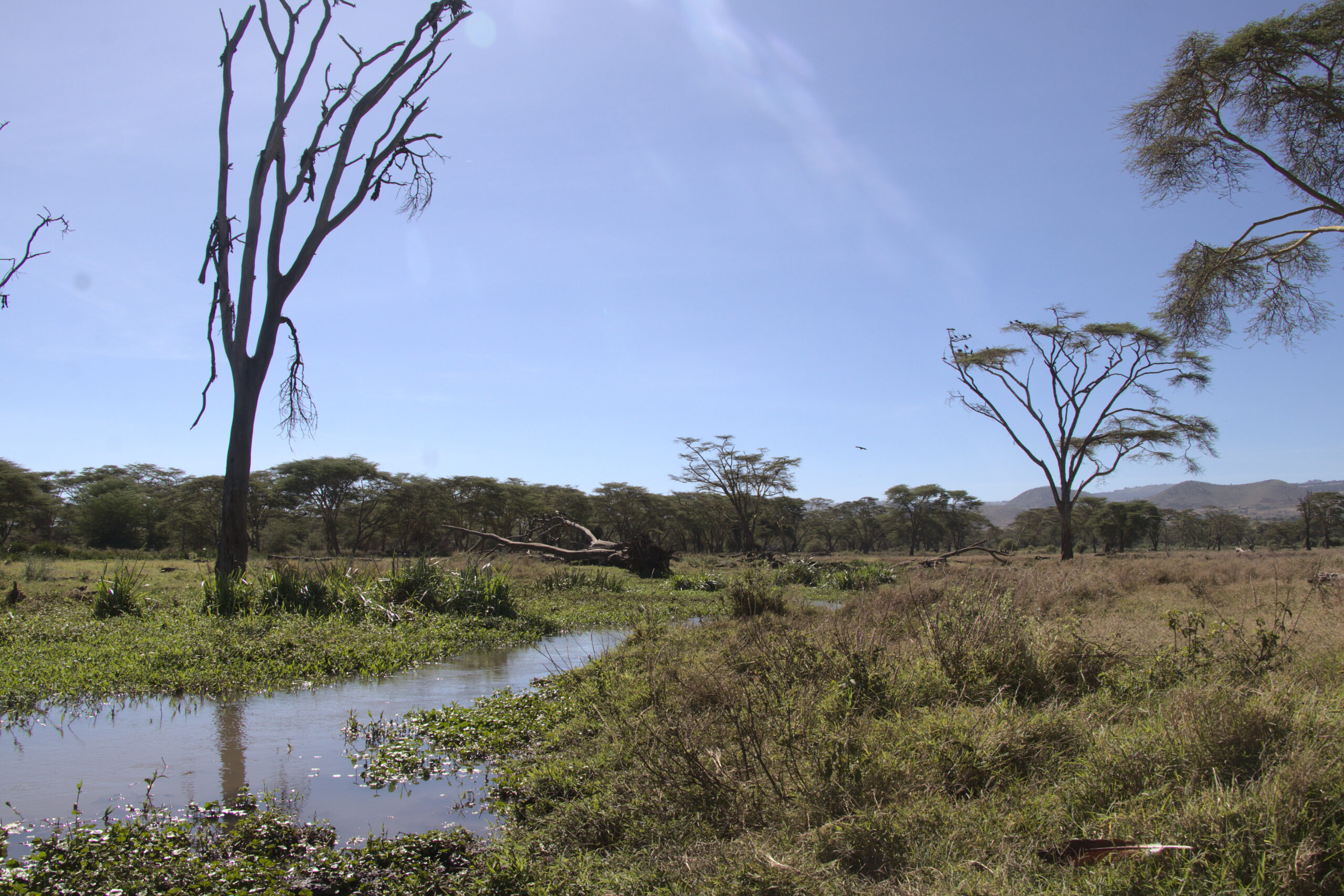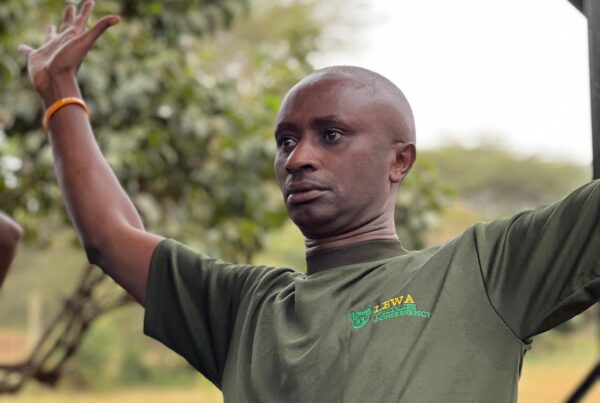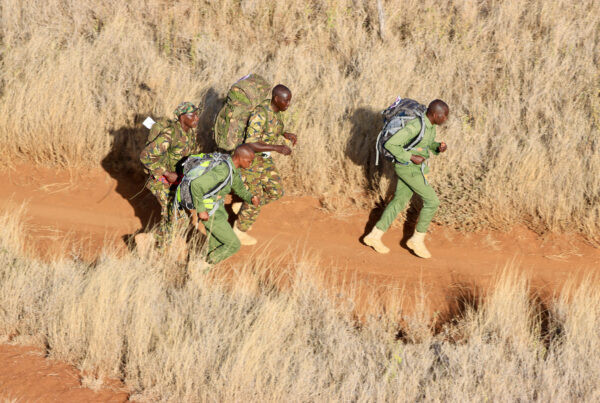Wetlands are the most biologically diverse ecosystems on the planet. Unfortunately, they have suffered the most environmental degradation than any other ecosystem on Earth.

Section of a stream feeding into the Lewa Swamp
If you drive out of Lewa HQ and head north-west of the conservancy, about 5 minutes into your drive, you’ll come across a sprawling swamp, stretching over 74 hectares of the landscape. On the 2nd of February 2021, Lewa staff marked World Wetlands Day by a walk-and-talk around this swamp. The Lewa swamp, as we call it, is a rich wetland where water birds frolic and herds of elephants dip for a heavy, lazy munch in the sun. It is a sight to behold – the green expanse of reeds set against the acacia savannah beyond. But more than adding to the scenic character of the landscape, wetlands serve an important ecological purpose.
Wetlands are a source of food and water

A View of Mt.Kenya from Lewa
The Lewa Swamp is serviced by ground water from Mt. Kenya, one of two water towers that sustains Northern Kenya. The groundwater emerge on Lewa as springs – one of which is the bubbles just a short distance from Lewa HQ and services the Lewa swamp.
One hardly goes past this spring and not spot herders watering their livestock. The spring then funnels into a stream that feeds onto the swamp. Here, wildlife stops for a drink, while birds – both native and migratory species – use it as a breeding habitat. On the other edge, the swamp bleeds out into a permanent river that flows out past Lewa’s northern boundaries, where it serves as a source of water to communities up north.
Wetlands support diversity of plant and animal life

The Grey Crowned Crane, a permanent fixture at the Lewa Swamp
The Lewa swamp provides ground for cover, nesting and roosting for water birds such as the Africa Fish Eagle, reducing predation and increasing chick survival rate. Globally, the population of the endangered Grey Crowned Crane is declining, but in Lewa, at 150 individuals, the crane had seen a stable and rising survival rate. This crane is a fixture at the Lewa swamp. The European White Stork migrates from Europe to breed at the swamp. Three years ago, Lewa used to host a flock in their thousands, but that number has reduced to a flock of hundreds – a fact that could be attributed to the more than average rainfall received across the country, making it likely that the storks took a detour to other foraging areas, given the availability of abundant food in other landscapes.
Wetlands provide material for construction
All of Lewa’s buildings have been thatched with reeds sustainably sourced from the Lewa swamp. Harvesting reeds is a much-needed source of employment to women and youth in the community.

Ngiri House, a home-style lodging for friends-of-Lewa
Wetlands filter/purify water and prevent flooding
Slowing down flows reduces erosion. It also ensures sediment isn’t transferred downstream – which might affect the productivity of other environments. Healthy wetlands (those whose natural rhythm is undisturbed) capture, process, store and release both nutrients and contaminants prior to the water returning to the environment.
Wetlands serve a great cultural value
For centuries, wetlands have brought life to both people and wildlife. A great example is the Okavango Delta in Botswana, which nourishes the Kalahari Desert and is now a UNESCO World Heritage Site. At the Kilombero wetland in Tanzania, almost the entire local population relies on wetland cultivation for their livelihoods. The Lewa swamp serves as a source of water not only to wildlife but also to the communities further north, an area that is prone to aridity.
An earlier generation of Lewa staff that hail from the community – such as ranger Sumbere Toki and Lewa’s head of general security John Pameri – tell vivid tales of their grandfathers, grazing and watering their livestock at the spring where the swamp now derives its source.

Sumbere Toki, one of Lewa’s longest serving rangers, at the Lewa water spring. The spring is fed by water from Mt.Kenya
“This spring used to be huge,” Sumbere gestures across the rocks by the banks, “…and not so long ago, even as early as the 1980s. Even these rocks we are now standing on were covered by water. I mean, this whole place was raw wilderness…only groups of men could venture into it so that they could defend themselves in case of anything. Over time, it came to be known as ‘the place of men’. That is where the name Lewa comes from; which is Maasai for ‘men’.”
Conserving Wetlands

The spring that feeds the Lewa swamp. The heart of the spring was fenced off, allowing for a thick regeneration of trees and brush, which enhances health and sustainability of overall ecosystem
Lewa Conservancy opted to fence off the heart of the spring, so as to reduce human and wildlife traffic and preserve the source. “Since we put up the fence, the vegetation around the spring has regenerated and given the spring new life.” Ephantus Mugo, Lewa’s conservation education coordinator, states, “Community members can still water their livestock, but in a manner that conserves this source that feeds so many other elements of the ecosystem.”

A lioness wiles the afternoon away at the swamp
Wetlands are the most biologically diverse of all ecosystems. Unfortunately, they have suffered the most prominent environmental degradation than any other ecosystem on Earth! It is for this reason that World Wetlands Day was year-marked. The day commemorates the date of adoption of the Convention on Wetlands (popularly known as Ramsar Convention after the city of Ramsar, Iran where the convention was adopted on 2nd February 1971).
This treaty’s purpose is to promote the wise use and preservation of wetlands; primarily by restricting access to the majority portion of the wetland and educating the public to combat the misconception that wetlands are wastelands. Wetlands are also protected under the UNESCO Man and Biosphere Programme (MAB), of which Lewa – through the Mt. Kenya Biosphere Reserve – is a part of. MAB’s goal is to use science to convey the importance of the relationship between people and their environment.

Lewa staff pays homage to the Lewa Swamp to mark World Wetlands Day. A team from the Research & Monitoring department illustrated the adaptation and importance of the interdependence among diverse organisms for a healthy wetland ecosystem
A full circle energy exchange
In Lewa, the 2021 World Wetlands Day’s excursion began with a deep-dive at the source spring and ended with a tree planting exercise at an exclusion zone near the swamp. Exclusion zones are areas that have been fenced off so as to allow the regeneration of trees and vegetation (primarily reduced by elephants’ enormous feeding needs). Improving the ecosystem around wetlands catchment areas enhances the energy exchange between organisms; from microbes to plants to wetland wildlife (turtles, snakes etc.) to larger animals such as birds and elephants, for whom declining bush and vegetation can pose a serious threat.While wetlands have been degrading, it is important to note that Lewa swamp has been increasing in size, a fact attributed to the undisturbed natural rhythm of the catchment area. The bottom line is that wetlands are vital ecosystems that improve livelihoods and reinvigorates the environment.

Section of Lewa staff after a tree planting exercise during the 2021 World Wetlands Day

A jumbo enjoys an all-you-can-eat buffet deep in the Lewa swamp. Because of their immense food needs, elephants have adapted to finding their way through forests, grasslands and wetlands. Thus, while an impala can get stuck in a swamp, an elephant’s body size and wide, flat foot enables it to comfortably wade and stand still even in deep swampy spots.
